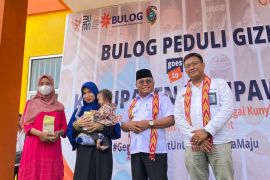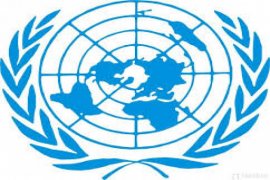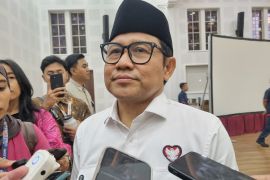The health sector has come forward as the first to pledge more attention to the nation`s less fortunate. The Ministry of Health will prioritize health services for the poor and people living in remote areas as its main program for 2011 by implementing more pro-active approaches.
"We will bring health access closer to the people, especially the poor and those living in remote areas," said Health Minister Endang Rahayu after installing new officials at her ministry here last Monday.
Promising better services, she said that her ministry will provide quality health services for the poor with more health staff and better reference channels. For this year, the priority of treatment will be of preventive nature unlike that given in 2010 when services were provided in hospitals.
"In 2010 we gave priority to what couldn`t wait, namely treatment of sick people and increased hospital-based services, patients must not be refused. Now, we begin with something more down-stream by (implementing) preventive programs," the minister said.
Apart from giving health services at health posts, Rahayu said, the Ministry of Health will boost the role of public-based health services by involving public participation such as was implemented at Vigilant Villages (Desa Siaga) and Integrated Mother and Child Health Centers (Posyandu).
Also, Minister Rahayu ensured that free-of-charge maternal services were started in January 2011, a program linked to the public health services (Jamkesmas) program. The broad outline of the program as well as the required funds were being prepared.
"What`s rather complicated is how to distribute the funds. This is part of Jamkesmas, whether the funds could be disbursed through community health centers (puskesmas), most possibly it will be transferred to district governments," she said, adding that free maternal health services would be provided in packages, starting from medical checks during pregnancy, delivery, and after delivery.
In the monetary sector, Bank Indonesia had also brought forward a solemn promise to take off part of the poor`s financial burden by enabling them less bureaucratic access on capital sources for business. The central bank`s promise was a part of its new policy, announced at the end of 2010.
"The policy is intended to further promote banking intermediation more efficiently and transparent, and to widen the access of the poor to financial services (financial inclusion)," Bank Indonesia says of its new policy, according to a media release made available to the press on December 30, 2010.
In rather technical financial terminology, Bank Indonesia outlines the new policy that is to include Calculation of Risk Weighted Assets (RWA) relating to Commercial Bank Retail Credit Risk and Small medium enterprises (SMEs) and on the licensing, regulation and supervision of Private Credit Bureau (PCB).
On the other hand , however, gloomy prospects for the poor are also in the air as the government may take subsidized fuels off the market any time soon in 2011. The policy of limiting the quantities of subsidized fuels will even push the poor further into poverty, according to energy observer M.Qurtubi in a discussion on oil and gas price policies recently in Bogor.
He argued that the government would able to offset the poor`s disadvantages due to the absence of subsidized fuels by just increasing other kinds of benefits to them. When there are only fuel prices that sold in the market based on the world oil prices, then price increases on all sectors would follow suit as there are almost nothing that not affected by the prices of fuel.
Qurtubi therefore recommended that the prices of fuels be increased to certain points but still within the purchasing power of the entire population.
In a similar tune, Coordinating Minister for Economic Affairs Hatta Rajasa also has said that oil price fluctuations would pose the biggest challenge for the Indonesian economy in 2011. "Global climate change will affect food and energy," he said at a new year press conference here (January 3).
Understanding that fuel hike would directly affect the prices of commodities, Minister Hatta added that the government had taken various policies to anticipate threats that might cause pressure on the food sector in 2011. "The government would continue stabilizing the price of food through market operations and increase stocks," he said.
The statistics
During the period of 1996-2010, the number and percentage of poor people in Indonesia fluctuated from year to year even though they tended to decrease during the 2000-2005 period, according to the Central Bureau of Statistics (BPS) figures.
During the 1996-1999 periods, the number of poor people increased by 13.96 million due to the 1998 economic crisis, from 34.01 million people (17.47 percent of the total population) in 1996 to 47.97 million people (23.43 percent of the total population) in 1999.
During the 1999?2002 periods the number of poor people decreased by 9.57 million people, from 47.97 million (23.43 percent of total population) in 1999 to 38.40 million (18.20 percent of total population) in 2002.
The number of poor people also decreased during the period of 2002-2005 by 3.3 million, from 38.40 million (18.20 percent of total population) in 2002 to 35.10 million (15.97 percent of total population) in 2005.
In the period of 2005-2006, however, the number of poor people increased by 4.20 million, from 35.10 million people in 2005 to 39.30 million people in 2006. As a result, the percentage of poor people also increased from 15.97 percent to 17.75 percent.
The number of poor people in Indonesia was 37.17 million (16.58 percent) in March 2007. It decreased by 2.13 million compared to poverty incidence in March 2006. However, percentage of poor people in March 2007 was still higher than that of February 2005, which was 15.97 percent.
In the following three years, the number of poor people also decreased to 34.96 million (15.42 percent of total population) in March 2008, 32.53 millions (14.15 percent of total population) in March 2009, and 31.02 million (13.33 percent of total population) in March 2010.
In the last three years, the number of poor people decreased by 3.94 million or 2.09 percent of total population. The poverty figure for 2011 is projected to keep sliding to 11.5-12.5 percent.(*)
Reporter: Vicki Febrianto
Editor: Aditia Maruli Radja
Copyright © ANTARA 2011










